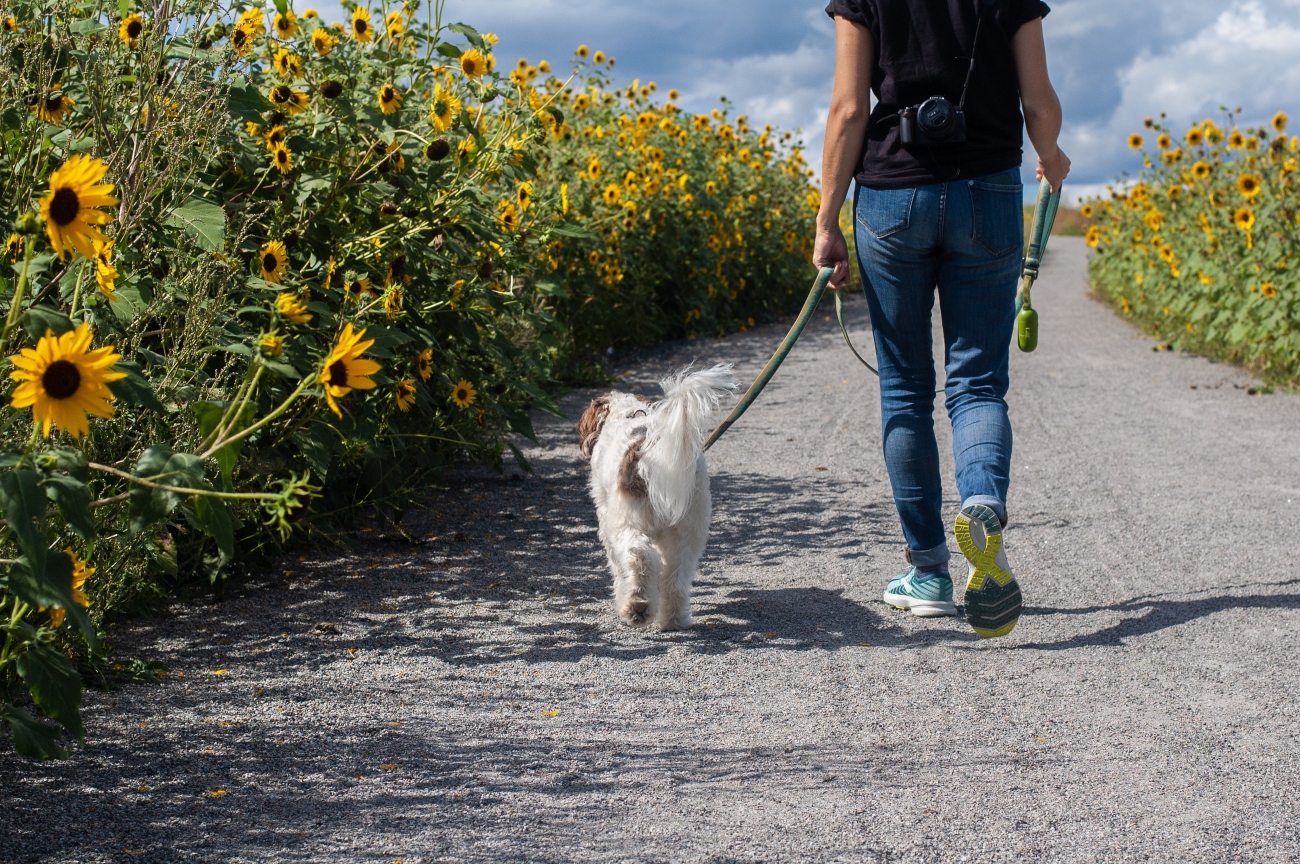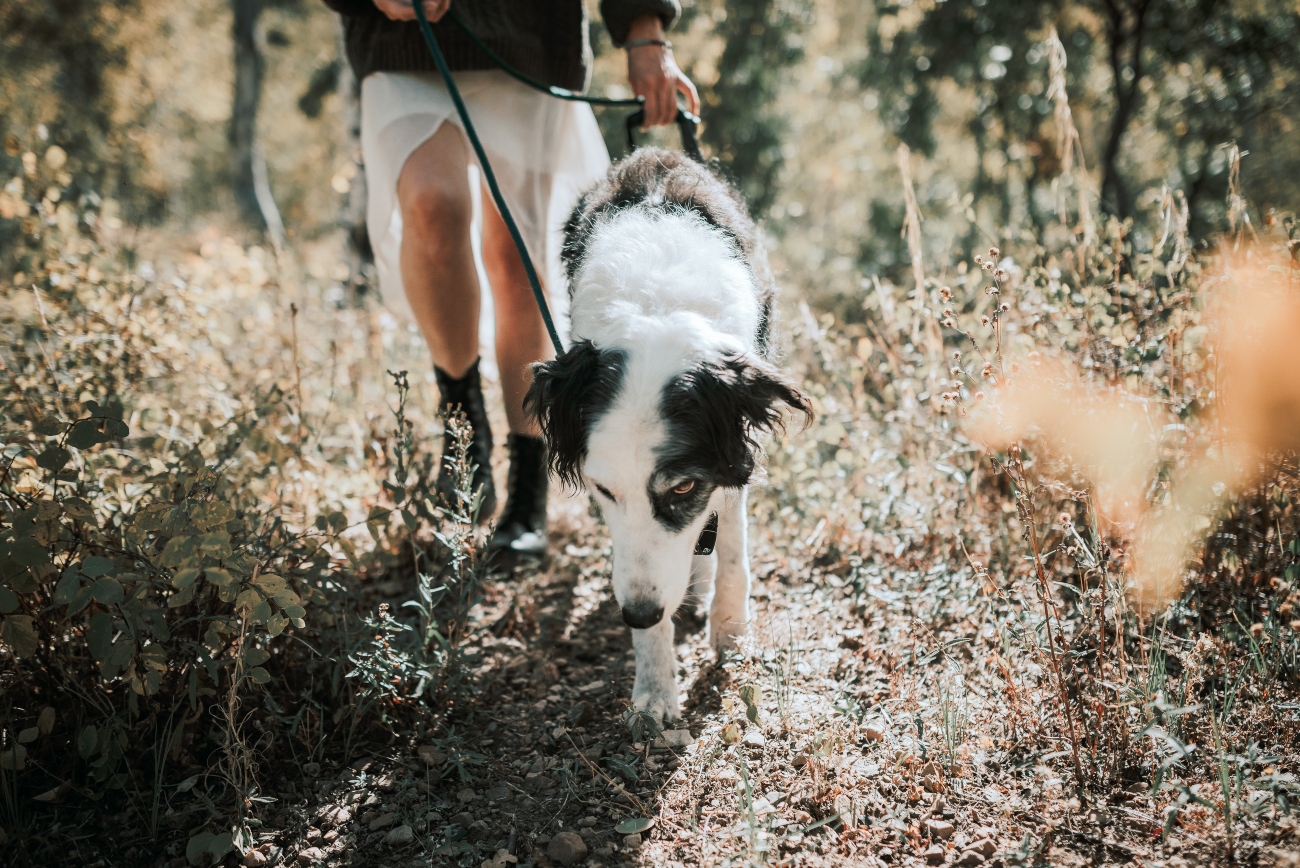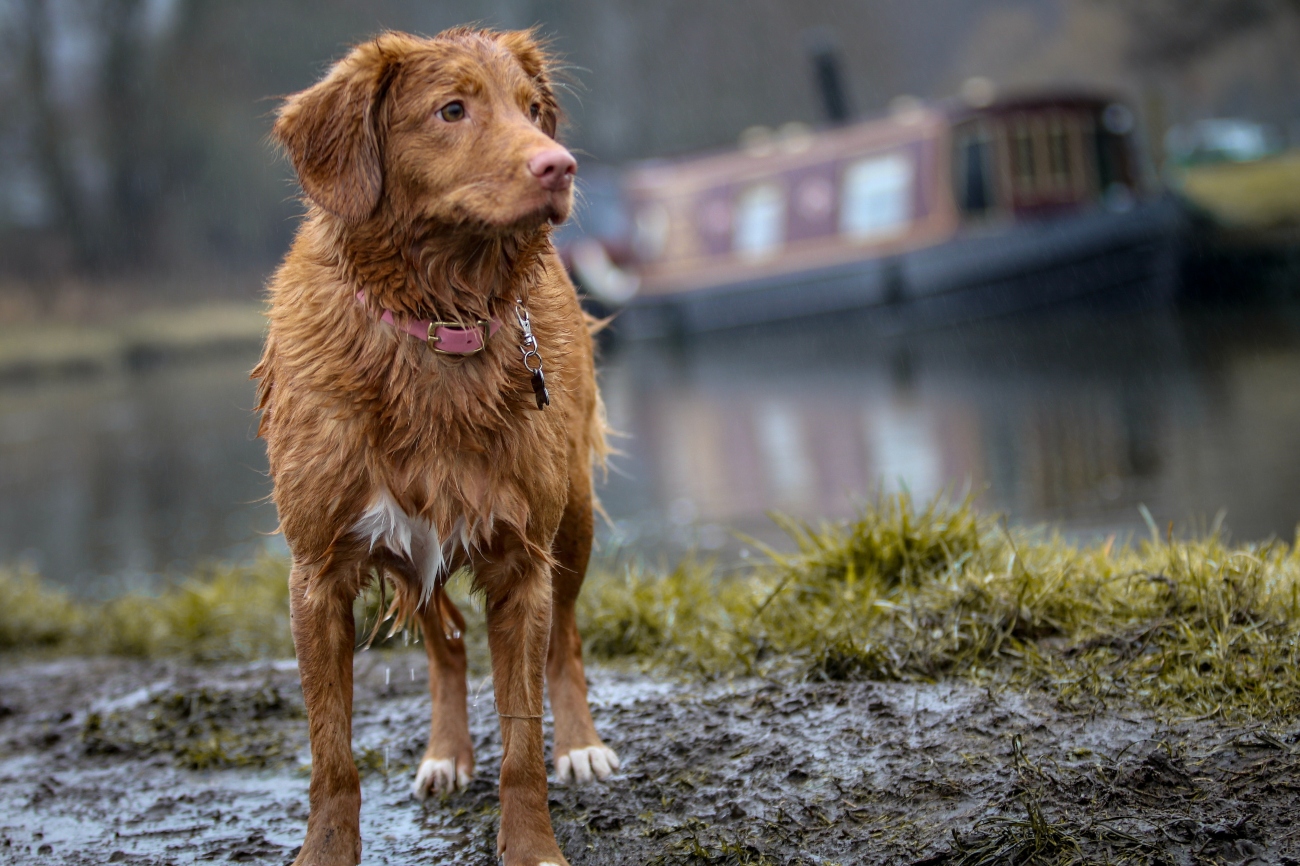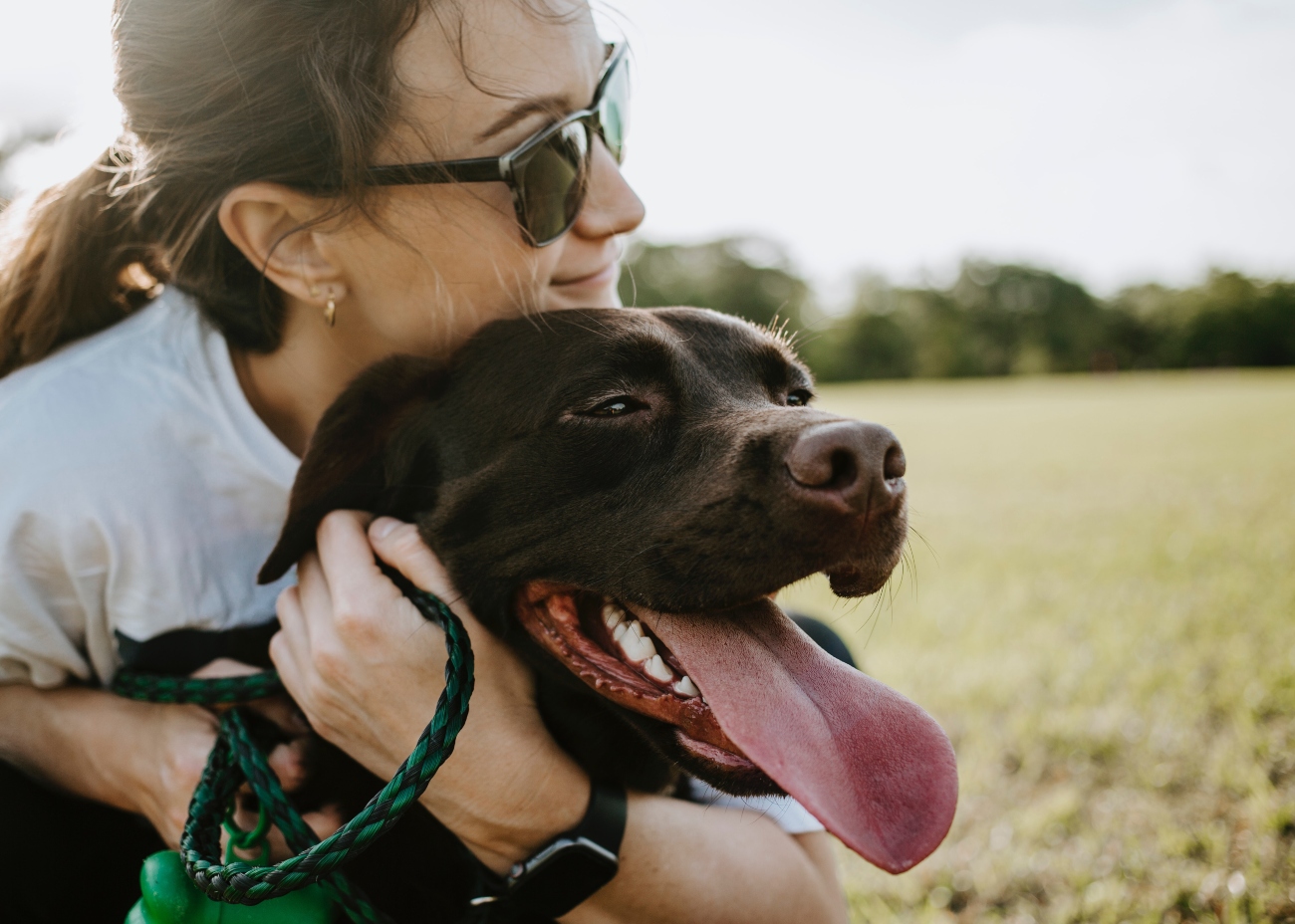
Top tips for walking older dogs
16th November, 2021
As your dog begins to grow a little greyer around the muzzle, they’ll need lots of loving care. But as well as plenty of extra cuddles, you might need to tweak a few other things to keep up with these life changes. And that includes looking at their daily exercise routine.
Older dogs may start to be less active, tire more easily, and not see and hear as well as they once did. Arthritis or painful joints might also mean they no longer have the same desire to get up and go for a long walk.
But while they’re getting on in years, they still need regular exercise and plenty of mental stimulation. Follow our top tips for walking older dogs and you and your pooch can look forward to many happy adventures together.
An important part of providing that extra support for your aging canine is by taking out some specialist older dog insurance. You don’t want unexpected medical bills to stop you from providing your beloved companion with a happy and comfortable life in their sunset years.

Benefits of walkies for older dogs
When your older dog is looking a bit tired and irritable it can be all too easy to hang up their lead and leave walkies for another day. However, while our senior pups may not be as agile and playful as they once were, they’ll still benefit from regular exercise and walks.
Just like us humans, as they get older it’s important to keep them moving – even if they don’t have the same enthusiasm as they did when they were more youthful. A bit of a walk with their loving human friend can soon make your older dog feel young again, at least for a short while.
If your older dog is suffering from arthritis or joint pain, then a regular walk is a useful part of preventing weight gain. When your dog starts to put on a few extra pounds it can put unnecessary strain on the joints and bones. By keeping active you can not only help prevent obesity but also increase the flow of blood and oxygen to the joints and muscles. This has been proven to be a great way to reduce the painful effects of arthritis.
Outdoor walks also provide dogs with an important opportunity to get some mental stimulation. Dogs are intelligent creatures who benefit from interesting new environments to explore. Remember this kind of stimulation is also an important way to combat the symptoms of dementia in aging dogs.
As you can see, regular walks provide many benefits for dogs of all ages. But when you’re walking a senior dog there are some big differences worth keeping in mind. Follow our top tips for happy walking.
Top tips for walking your senior dog
Speak to your vet
When you’ve made the decision to invest in older dog insurance you’ve armed yourself with a powerful weapon to keep your four-legged friend healthy. All too often, because of worries over financial costs, owners don’t take their dogs to see a vet until it’s too late. By having insurance cover, if you notice your dog is struggling to get around or perhaps isn’t as keen on walkies anymore, you can just pop to your vet.
While you’re there, ask whether there’s anything they could recommend to address any symptoms making exercise difficult. Perhaps a course of canine massage, hydrotherapy or even acupuncture could get them back on their paws? If it’s good enough for humans, then it’s good enough for our furry friends.
The PDSA says it’s important to discuss with your vet any changes to your older dog’s exercise routine. After all, you’ll want to make sure that walks are helpful to your dog, rather than causing more harm than good.
Keep exercise regular and gentle
It’s no good making exercise so strenuous that it takes your senior dog days to recover. Little and often is a much better idea to protect those stiff, old muscles and joints from damage. But while they’re getting regular exercise make sure they’re also getting more rest, too. A supportive, soft bed is a must. It should be left in a quiet space where they can rest and recover, undisturbed by other more boisterous members of the family.
You can also help them rest more by keeping their food, water, toys and bed all close together and easy to get to.
Try shorter, but more frequent walks
Long walks might be getting more of a struggle for your pooch but that doesn’t mean getting rid of walkies altogether! The answer is to keep to a fairly short route so they don’t get too tired and get put off from coming out again.
Dogs of all ages need the chance to get outdoors every day to sniff, stretch their legs and get some fresh air. There’s really no substitute for getting the blood pumping, the joints and muscles working, and the mind active.
Be mindful if you’ve got dogs of different ages. Depending on breed and size they could have very different exercise requirements. A young excitable pup will need a nice, long walk to burn off some of that energy, unlike their older friend. If you’re finding it difficult to come up with a good walk schedule for your dog, speak to your vet.
Prepare for the weather
It’s important when exercising any dog to keep in mind the weather conditions when heading outdoors. Older dogs in particular can find very high or low temperatures difficult to cope with. If you’ve begun to notice this then you’ll need to make allowances. Perhaps walk during cooler times of day if it's hot. While the RSPCA advises owners to buy a well-fitted, warm and waterproof dog coat for when it's cold.
It’s fairly simple to plan ahead by looking at the forecast before you leave. If it’s too cold for you to walk around without a coat then it’s probably too cold for them. And if you’re finding the weather too hot, then imagine how they must feel with their warm fur coat on!

Stick to a routine
We all like a familiar routine in our lives, but for older dogs this can be even more important. Particularly if they’re developing difficulties with their hearing, eyesight or sense of smell. As some dogs get older, they can become anxious and confused when taken to somewhere unfamiliar to them. By sticking to a regular walking schedule around the same times every day, your aging dog is much less likely to become anxious.
Obviously, you can add more walks as needed, you don’t have to stick to the same ones all the time. But keeping a generally predictable schedule can help reduce the symptoms of dementia and prevent anxious behaviours from developing.
Take a break and bring water
Even a short walk can be tiring for an older dog, so be sure to factor in a couple of breaks along the way. Bring some water for when they inevitably get thirsty, and maybe even a tasty treat as a reward for being such a good dog. Be aware that even old dogs can get so excited on their walk they forget the fact they need time to relax and recover.
By taking the time to stop and sniff you’ll also be providing your dog with some great mental exercise. So, if you know your dog has a favourite spot to sniff, or a furry friend who lives nearby, make it a point to stop there for a moment before you continue. It isn’t a race after all!
Stay aware of your surroundings
Unfortunately, as your dog’s sight or hearing deteriorates with age, they are more likely to be surprised by sudden movements. For example, a jogger suddenly rushing past them without any warning could frighten them and this could make them unusually aggressive or anxious.
Walk at your dog's pace
As we already noted, it’s not a race. Even if you’re busy, it’s important not to rush them. Or make them walk further than they’re able.
Walk on easy surfaces
Old muscles, joints and bones can be put under a lot of stress if you spend too long walking on high-impact surfaces such as concrete and pavement. Try to stick to short grass or softer ground as much as possible to lessen the impact.
Take it indoors
If the weather gets too much for your dog, then consider doing some indoor exercises instead. Just because you’re having to limit outdoor time doesn’t mean you’ve got an excuse to skip exercise altogether!
Exercising indoors can still benefit your senior dog. Invest in some puzzle toys and dog-friendly indoor games as a fun way to keep your old dog happy and enjoy some quality time together.
Check their diet
As your dog gets older and their exercise needs change, their diet also needs to be reviewed to make sure it’s still suitable for them. If your dog is suffering from arthritis or any other medical condition then there are plenty of supplements and foods that could help.
Have a chat with your vet to discuss a suitable diet for your senior dog to help prevent weight gain and guard against other conditions. However, if your dog appears to be losing weight rapidly, this could be a sign of something more serious. So you should make sure to consult a vet as soon as possible.
With older dog insurance from Petwise there’s a senior food contribution to help you with this. Speak to our helpful team today to find out more.

Listen to what your dog’s telling you
The link between dog and owner is a unique and special one, but sometimes if we’re not careful we can miss when they’re trying to tell us they’ve had enough. So, you need to always pay close attention to your dog when walking. It’s no use spending your time checking your phone, you need to be present in the moment!
If they show any sign of discomfort, such as limping, slowing down, or refusing to move, you need to stop and assess the situation. It might be that they just need to take a break and catch their breath. But it might be that they need to head home. Knowing what’s normal behaviour for your dog is vital when keeping an eye out for potential problems.
Try mobility aids for your senior dog
Even a dog whose activity has been affected by mobility problems still needs to keep active to stay as healthy as possible. There are lots of mobility aids available on the market to help even the most serious disabilities. For example, support harnesses or slings can be an invaluable way to give an extra helping hand when they’re walking. You can even get doggy wheelchairs to help support pets with weakened front and back legs.
Ramps and steps are particularly useful to help dogs move around the house and get in and out of the car without being too uncomfortable.
Are you sure it’s just old age?
If you’ve noticed your aging dog has trouble walking or running like they used to, it might not just be old age that’s causing it. There might be a physical problem like a luxating patella where the knee-cap pops in and out of place. Or their nails might be too long. When was the last time you had them trimmed? If you’re not sure, speak to the 24-Hour Vet Helpline from Petwise for some professional advice.
Get older dog insurance from Petwise
Here at Petwise, we want all older dogs to have a happy life. Older pets should still be able to enjoy a good quality of life, walking, running and interacting with you just like they always have done.
You shouldn’t let the financial worry of vets bills stop you from giving your older pet the senior life they deserve.
That's why we're proud to offer various levels of older dog insurance. Benefits can include:
- 24-Hour Vet Helpline
- Farewell cover included
- Dental cover as standard
Remember, there’s no upper age limit when joining, so even if your dog is getting on in years, we can still provide the cover they need.
Get in touch with us to find out more about older dog insurance today.